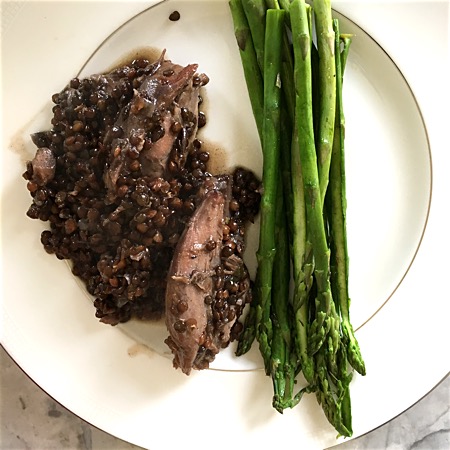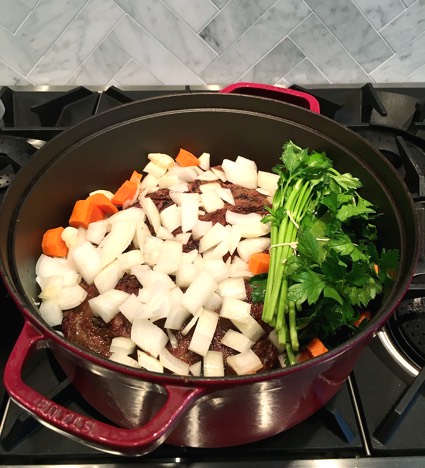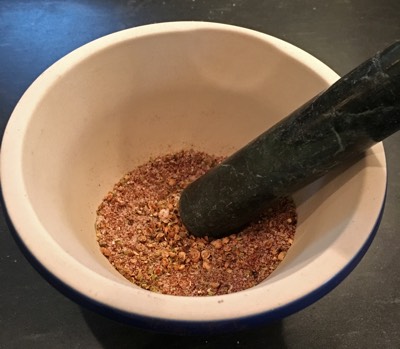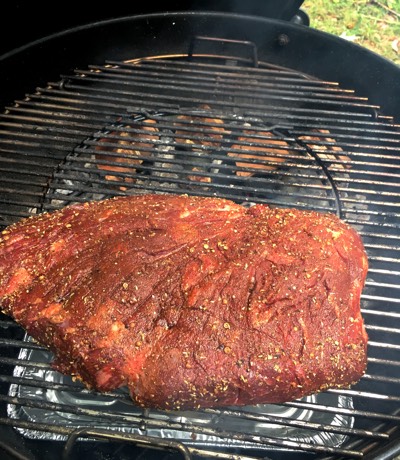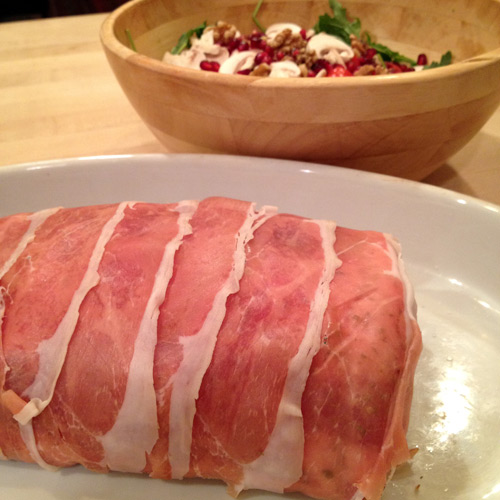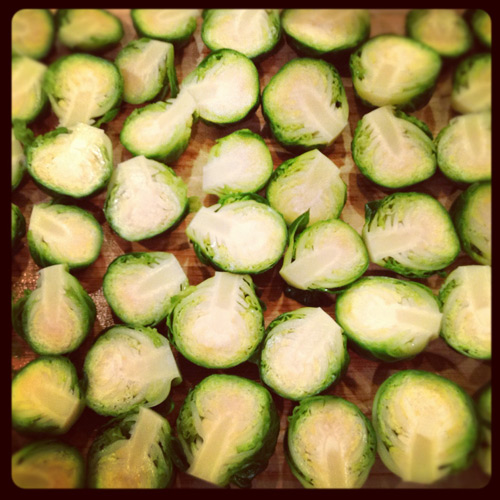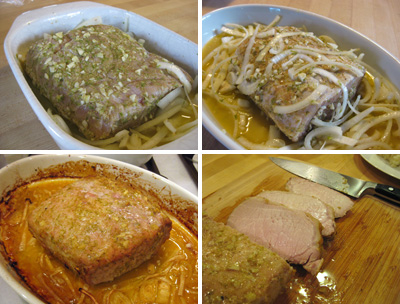It’s always nice when an experiment succeeds. I like pickling ramps and onions. I like brining pork. I wondered what would happen if I combined the two. In this case, I created a pickling brine and used it on both red onions and pork loin, which were then served together. Big hit. The key is doing the upfront work several hours ahead so that the pork can take in the flavor.
For the brine itself, I referenced two old posts of mine and Zen Can Cook to create the pickling liquid. Here was tonight’s version:
Pickling Brine
1 cup rice vinegar
1 cup water
1 tbsp salt
1 tbsp honey
2 tbsp sugar
1 tbsp coriander seed
1 tbsp dried rosemary
1/4 to 1/2 tsp chili pepper flakes
a few black peppercorns
2 or 3 bay leaves
1 cinnamon stick (or 1/2 tsp ground cinnamon)
pinch of celery seed (optional)
Combine the ingredients in a small pot, bring to a boil then simmer for 1 minute.
Halve then thinly slice a red onion and place in a dish big enough to marinate the pork loin (I cooked two in this case). Pour the hot brine over the onions and let cool for 20 to 30 minutes. You can pour the brine liquid through a strainer to remove the seeds and spices, although tonight I did not bother and the remaining seeds did not bother anyone.
With a fork, remove the now-pickled onions to a bowl. Cover and keep in the fridge until serving time.
The brine should still be in your marinade dish. Stir in 1 tsp of mustard and 1 tsp of soy sauce. The add the pork loins. Cover and marinate in the fridge for several hours (at least 3 or 4 is my recommendation).
When it comes time to cooking, remove the pork from the liquid and grill until cooked but not dry. With pork loin I think that learning the appropriate firmness of the meat is far more effective than using an instant-read thermometer (which I like using on bigger cuts).
Let the pork rest for 5 minutes then slice and serve with the pickled onions on the side.
This pairs well with a garden salad or a variation of my 3 bean salad.
